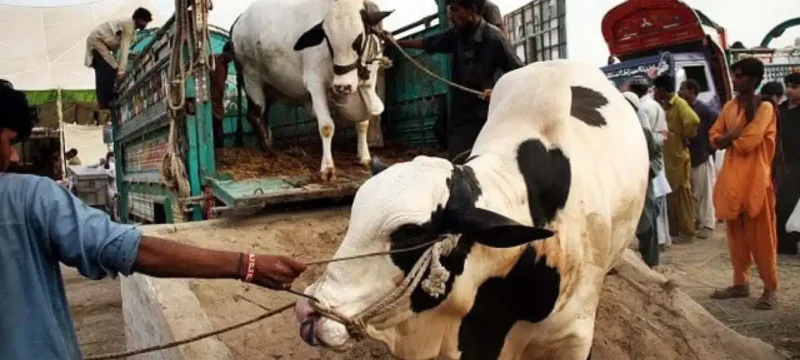Eid al-Adha, also known as the Feast of the Sacrifice, is deeply intertwined with the Hajj pilgrimage and holds immense importance for Muslims around the world. The act of slaughtering an animal during this festival is not about cruelty or bloodthirstiness, but rather a symbolic gesture of sacrifice and a means of bringing the community closer together. Let’s delve into the origins and significance of Qurbani (sacrifice) on Eid al-Adha.
Read More: Effective Methods to Eliminate the Smell of Qurbani Meat
- Connection with the Hajj Pilgrimage:
Eid al-Adha is closely associated with the completion of the Hajj pilgrimage, one of the Five Pillars of Islam. The sacrifice of an animal marks the successful conclusion of this religious duty and is considered a vital aspect of the festival.
- Obligation for Muslims:
Slaughtering an animal for Qurbani during Eid al-Adha is an obligation for financially capable Muslims, both male and female. It signifies their willingness to give up something of value for the sake of God and serves as a reminder of their devotion and gratitude.
- Distribution of Meat:
The physical sacrifice of an animal is made to please God, but the meat obtained from the Qurbani serves practical purposes. It is divided into three portions: one for personal consumption at home, another for close relatives and friends, and the remaining portion is donated to those who cannot afford to sacrifice an animal.
- Reflection on the Source of Food:
Eid al-Adha serves as a reminder of the origins of the food we consume daily. The entire process, from purchasing and handling the animal to slaughtering, butchering, and distributing the meat, emphasizes the connection between the food we eat and the living creatures from which it comes.
- Care and Compassion in Sacrifice:
The act of Qurbani requires careful consideration and compassion toward the animal. Islamic teachings emphasize that the animal should not be slaughtered in the presence of other animals or exposed to distressing sounds or scents. The sacrifice should be performed by a knowledgeable individual to ensure a swift and humane death, with the animal being in a positive mental state.
- Donations and Charitable Initiatives:
In addition to personally slaughtering an animal, Muslims can choose to donate money to charitable organizations such as the Red Crescent. These organizations conduct the sacrifice on behalf of the donor, ensuring the meat reaches those in need. However, it is crucial to entrust donations to reputable and trustworthy organizations.
- Strengthening the Community:
Eid al-Adha fosters a sense of community and solidarity. Through the Qurbani, neighbors and members of the community become aware of those who were unable to perform the sacrifice. This leads to the distribution of meat to ensure that everyone, regardless of their financial means, can partake in the festivities without feeling demeaned or humiliated.
Eid al-Adha and the practice of Qurbani exemplify the spirit of sacrifice, care, and compassion within the Islamic faith. It is not an act of cruelty or bloodlust but a symbolic gesture of devotion to God and a means of bringing the community closer together. The festival serves as a reminder of the importance of sharing blessings, supporting those in need, and fostering a strong and thriving community based on care and compassion.









